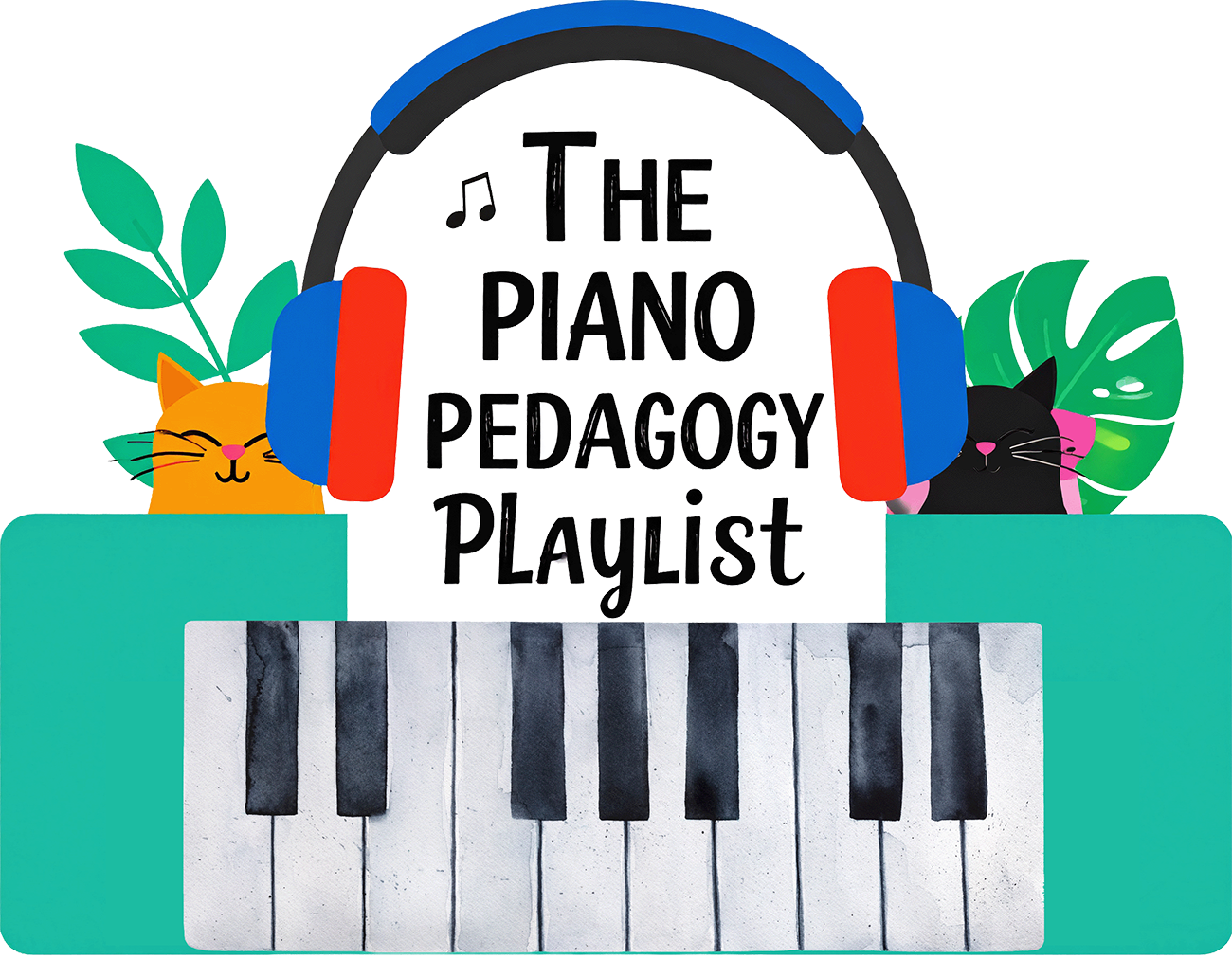
Featuring duets for beginning level students and their teacher or another advanced student. From the collection, “Melodic Explorations 1“, by Giulio Pietropaolo.
Don’t Give Up – Digital Download
Growing Up – Digital Download
Sad Story – Digital Download
Waiting For It – Digital Download
This week is all about beginners. I’m featuring student/teacher duets written for the earliest levels of beginning students. But these aren’t your typical uninspiring duets for beginners. Through Giulio Pietropaolo’s Melodic Explorations, we discover that beginning-level piano music can be expressive, engaging, and artistically satisfying for both student and teacher.
— Transcript —
We have two firsts on today’s episode of the podcast. First, I’m featuring only pieces written for beginning-level students, literally within the first months of starting lessons. And second, every piece you’ll hear today is a duet, written to be played with a teacher or a more advanced student.And through the magic of digital recording, I get to play all of these duets with my most reliable and flexible duet partner, myself. The collection we’ll be exploring is called Melodic Explorations by the Italian composer Giulio Pietropaolo. And I think you’ll be surprised how fresh and musical these early-level duets sound.
It’s all coming up on today’s episode of the Piano Pedagogy Playlist.Greetings, fellow music educators, and maybe some students too. I hope your day is off to a good start. My name is Luke Bartolomeo.
I’m a pianist, a teacher, and also a developer of apps for music education, including Flashnote Derby. Each Monday on the Piano Pedagogy Playlist, I play for you some of my current favorites from the contemporary repertoire of music written for piano students. As piano teachers, we’ve all been there, playing duets with our beginning students.
And it’s often fun, but to be honest, the teacher parts are often kind of lacking, to put it mildly. What if we kept the student part simple enough for a beginner, but allowed the teacher part to just do whatever with the goal of creating the best possible piece of music within these constraints? Giulio Pietropaolo’s Melodic Explorations seems to take this approach.His goal is to write real music, duets where even the earliest beginners get to experience genuine musical interaction. The student parts are simple and accessible, but the teacher parts are rich, warm, interesting, rewarding to play. It’s a win for everyone.
Let’s jump right in with a piece called Don’t Give Up. Now, I was going to save this one for the end because it’s such a showstopper, but I also think it perfectly captures what this collection is about. The student’s part is straightforward, a five-finger melody that an early beginner could learn, but the teacher’s part adds drama, color, energy, to put it mildly.
Fasten your seatbelts for Don’t Give Up.
Now that’s something, isn’t it? I can only imagine how thrilled my six-year-old self would have been to perform that in a recital with my teacher. Even if you end up taking a bit slower of a tempo, it’s still exciting and effective.
Now let’s turn to a gentler example, a piece called Growing Up. This one stays entirely in the C major five-finger position, with the student’s hands again just doubling each other an octave apart. It’s literally something a student could learn in the first few weeks of lessons.
It’s a piece that you could use to reinforce basic rhythmic concepts, as well as dynamics and beginning steps in note reading. Or a piece that could be taught by rote. Or even a little bit of both, some reading, some ear training.And regardless of the approach, the student gets to make music in a way that feels expressive and authentic. Here’s Growing Up from the collection, Melodic Explorations.
The Melodic Explorations series is published by Piano Safari, known for their contemporary piano method of the same name. It’s a method that has, at its core, the goal of helping students make music early, meaning before they have any reading mastery or before they have any technical chops to speak of. And these duets are a perfect fit for that philosophy.
They’re not just about getting the notes right. They’re a chance to work on tone, relaxation, abstract concepts like arm weight, things we often reserve for later students, but which we really should start gently introducing on day one.
Our next duet, Sad Story, is another good example of this approach. The student plays in a simple A minor five finger position. The notes move only by step or by repetition, so it’s easy to learn intervallically, even for beginning readers. The student is working on developing basic skills, but they feel as if they’re playing something important, which they are, and they should always feel that what they are playing is important.
We’ve come to our final duet for the day, a piece called Waiting For It. This one is a bit of a workout for the teacher, although it starts out sparse and restrained, as though we’re just waiting for the it, whatever it is, to happen. Then gradually both parts become more and more animated, almost impatient, before settling back down again in resignation to just wait some more.
This one’s a lot of fun to play, and pretty clever musical metaphor. I think students love when the music feels like the title, and this music definitely feels like we’re waiting for it.
Giulio Pietropaolo is an Italian pianist and educator, currently teaching at the Catarina Gurska Higher Center in Madrid, Spain. Much of his composing grows directly from his teaching experience, pieces written to fill in the gaps that he saw in existing materials. There are currently three volumes of melodic explorations, each one gradually increasing in sophistication.
All of them staying accessible for elementary level students. And since the collection was just published in 2024, you may not yet have come across it. But I think these pieces are a wonderful alternative to the typical method book duets.
They’re musically rewarding for both teacher and student alike. You can find a link in the description to Melodic Explorations via the Piano Safari website. It’s available in both print and digital editions.I’ll also have a link on my website, pianopedagogyplaylist.com. Just look for episode 11.
And just like that, it’s time to close the lid on today’s episode. This week, I hope we’ll all remember, as students or as teachers, that anytime we bring our fingers to the keys, we’re creating something special and unique and important, regardless of our age or ability level. I’ll see you again next Monday, when I’ll share some more of my favorite music from the world of piano teaching. Until then, keep nurturing the music, and have a great week!




Leave a Reply